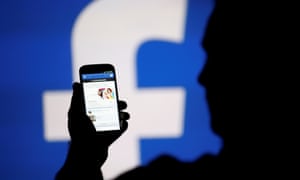NDM independent case study: Media Magazine/Factsheet
research
MM40: Dangerous games...why people play games
-Direct Effect Theory
When looking at some of the responses to controversial media
texts it’s possible to see the general acceptance of an idea that is based on a
largely discredited audience theory – the hypodermic syringe theory. This
theory claims that the media ‘injects’ its passive audience members with ideas,
values and attitudes that can directly influence behaviour. This simple cause
and effect perspective of media influence fails to address the complexities
that make up the collective audience and indeed its individual members. To
assume that people are susceptible to the extent that they can be directly
influence in this way does not give people any credit for personal moral and
behavioural decision-making.
- Gaming
The violence of computer/console games has led to bans,
restriction of sales through classification, censorship and hundreds (indeed,
probably thousands) of panicked articles on the negative influence games have
on their audience. Amongst other things, games are accused of reducing
attention spans, desensitising young people to violent imagery, stunting social
development and creating ‘anti-
social’ desires.
A shooting in Holland
in April 2011 was linked to Call of Duty: Modern Warfare 2 and a French man
retaliated against an in-game stabbing by actually stabbing his gaming
opponent.
-Ferguson’s study
in the area states
that media texts have a weaker level of influence than the other factors cited
whereas Kooijmanns gives more credence to the direct influence of gaming on
behaviour.
Some see gaming quite differently; and there is an argument
that violent games can relieve stress and dilute violent impulses as the player
acts them out in a safe, non-destructive environment.
Conventional media theory such as Blumler &
Katz’s uses and gratifications theory provide rather broad
ideas about how fictional texts offer escapism for their audiences,
transporting them to a different emotional place and diverting them from the
mundanity of their real lives.
Richard
Dyer’s utopian solution theory.
This has a relatively simple premise: entertainment texts
offer audiences a utopian or perfect ideal that they can access through media
consumption. This ‘utopia’ is in contrast to the imperfections and difficulties
audiences face in their own social lives.
The Hays Code
Was in place in
Hollywood between the 1930s and 1960s and, even though it was a voluntary code,
it managed to restrict filmmaking in ensuring that specific representations
were avoided and certain moral values upheld. The representation of ‘ministers
of religion’ could not be comic or villainous and ‘excessive and lustful’
kissing could not be shown. In Britain we still have the British Board of Film
Classification (BBFC) which classifies films and often suggests cuts to keep
films within certain certification classifications.
-Maslow’s Hierarchy
A second theory that offers insight into the needs of video
game audiences is the consideration of the human needs of the audience as
outlined by Abraham Maslow’s hierarchy of human needs.
However, the upper two categories of self-actualisation
(becoming the best we can be) and the resulting self-esteem and praise by others
can only be met by individual action and achievement of socially recognised
goals. As we explore each genre of games in turn, we will see how computer
games offer audiences ways to access
these needs easily through play.
FPS-first person shooter
According to Dyer, the predominantly male audience is
offered an energetic escape from the sedentary lifestyles that most males are
involved in their place of education or work. Likewise this allows male
audiences a means of asserting dominance upon a virtual battlefield with their
tactical movement and skill in handling virtual weaponry. The rewarding of this
dominant and physically capable behaviour is a means of the audience becoming
the most masculine male they can be. This is a form of masculine self-actualisation.
This is for titles such as Call of Duty which is produced by
Activision, other titles include the Battlefield series and Halo.
The uproar surrounding Call Of Duty: Modern Warfare 2, and
the Newsnight edition where journalist Paul Morley levelled the charge of
bloodthirst without consequence at the game and its players.
NDM independent case study: Media Factsheet research
Media factsheet 56
Hypodermic syringe theory (sometimes called the magic bullet
theory
or the hypodermic needle model) claims that access to media
texts
can directly influence the actions or attitudes of the
audience. The
idea is that by seeing violent images the audience will be
encouraged
to act violently. This theory has been largely rejected in
media studies
for its overly simple ‘cause and effect’ model of media
influence. It
does not take into account the fact that different audience
members
may react differently to media images and it implies that
audiences
are rather simplistic and not able to make choices for
themselves.
This is suggesting that audiences are passive and blindly
follow what they see in the video games such as the 'violent' games produced by
activision.
Several high profile violent events have been linked to
gaming
including the Columbine High School Massacre, The Interstate
40
Shootings and The Virginia Tech murders. In each of these
cases
much publicity was given to the perpetrators being known to
have
played on Doom, Grand Theft Auto III and Counter-Strike
respectively.
Tabloid newspapers
and some politicians have made these simple connections when
calling for the banning of titles such as Grand Theft Auto,
Hitman.
Carmageddon and, more recently, Saw and Call of Duty: Modern
Warfare 2. Reports that the US military use computer games
to train
and desensitise soldiers in preparation for battle has added
to the
concerns held about the impact of the violent nature of some
games.
These games are often scapegoated for atrocities such as
these which only fuels the fire for people already having a negative view on
video games. Despite there being deeper underlying mental health and other
issues with the people responsible for the attacks the media points the finger
towards video games like call of duty.
Media factsheet 68
The massive and rapid changes in technology that have
occurred
in the last decade have given rise to what Marwick (2008)
calls
‘technopanics’. Technopanics are moral panics that are a
response
to fears around new media technologies and they tend to make
young people’s use of the media seem abnormal or unhealthy.
For
example, teenage boys’ proclivity for violent console games
is seen
as a cause for concern due to the supposed effect upon the
user.
The console game Call of Duty: Modern Warfare 2 caused a
minor technopanic in its own right for featuring, amongst the violence, a scene
in an airport where the player is an undercover CIA agent who accompanies a
terrorist as he shoots civllians at an airport terminal.
Video game publisher Activision Blizzard's shares leaped
Friday after unexpectedly strong fourth quarter results and a share buyback
announcement.
The Santa Monica, California-based company reported adjusted
earnings of 92 cents a share for the fourth quarter, 19 cents above estimates,
while revenue of $2.45 billion also topped expectations. The company said it
had 447 million monthly active users in the quarter, including a record number
of monthly active users in the Blizzard division.
The firm also announced a two-year buyback program of $1
billion in outstanding common stock, beginning Feb. 13, 2017.
Shares gained more than 18 percent in Friday trade. With
Friday's gains, the stock has surged 30 percent so far this year.
In 2010, Call of Duty: Black Ops became the top-selling game
of all time, a title which has since been claimed by Grand Theft Auto V, which
took just three days to generate $1bn (£620m) in revenue after being released
on 17 September 2013.
Call of Duty: Modern Warfare 3 made nearly £500m in sales
globally during the first five days of its release in 2011.
All Call of Duty games are about killing people, but usually
the people you kill are armed soldiers who are also trying to kill you. Not so
in the “No Russian” mission in Call of Duty: Modern Warfare 2. In this mission,
you play an undercover agent embedded in a terrorist group whose mission is to
open fire on innocent civilians at an airport.
The pace of the mission is slow and methodical as you and
three terrorists walk through the terminal, using automatic weapons to mow down
crowds of unarmed travelers. You don’t have to participate in the killing, but
there’s nothing stopping you, either.
You don’t normally assassinate actual people in video games,
but the opening mission in Black Ops has you attempt to do just that. You start
in a bar in Santa Maria, Cuba in 1961, where you gear up to find and kill Fidel
Castro.
Squads of police units stand between you and your target,
but you take them out as you make your way to Castro’s plantation and into his
bedroom. Castro takes a woman hostage, but a well-aimed bullet finds its way to
his forehead, and your mission is accomplished. Unfortunately for you, it turns
out the man you killed was a body double. As you can probably imagine, the people
of Cuba weren’t thrilled to see this mission in the game
Other killers have been hooked on violent video games too
and have a warped sense of what's real and what's not, thinking that real life
is just like a video game.
‘Numerous studies have linked violent behavior to
consumption of violence in video games’.
Recently, researchers at Ohio State University conducted a
study and concluded that, "People who have a steady diet of playing these
violent video games may come to see the world as a hostile and violent
place." Brad Bushman, professor of communication and psychology at OSU,
continues, "These results suggest there could be a cumulative effect"
in making video game players more aggressive and violent over the long term as
well as over the short term.
Stud1. Adam Lanza, Sandy Hook Elementary, was a frequent
player of violent first-person shooter video games. It was said his existence
largely involved playing violent computer video games in a bedroom.
2. James Holmes, went on a rampage in a movie theater
showing The Dark Knight Rises in Aurora, Colorado in July 2012, He was a
frequent player of violent video games including World of Warcraft, an
infamously addictive role-playing game.
3 Jared Lee Loughner, Tucson, who shot Rep. Gabrielle
Giffords and killed six others in Tucson in January 2011, was both mentally ill
and a video gamer.
4. Eric Harris, based on his journal, a panel of
psychologists, psychiatrists and FBI agents point to Harris' contempt for
others and his total lack of empathy and conscience as evidence of his
psychopathic tendencies. He also enjoyed violent video games.
5. Elliot Rodger, killed seven young men and women,
including himself. He was hooked on violent video games from a young age from
his own admission, hiding himself in World of Warcraft, where he felt
comfortable and secure.
6. Nehemiah Griego, killed five, including his mother,
father and his three younger siblings. He loved playing violent video games and
even enjoyed talking about them to crime investigators.
7. Jacob Tyler Roberts, played violent video games (his
rampage enacted a violent scene in Grand Theft Auto)
8. Anders Behring Breivik shot 68 people dead at a youth
camp of the Norwegian Labor party, another nine in a bombing of government
buildings According to the judgment rendered against him, he liked playing
violent games. He actually used the video game Call of Duty to train for his
shooting massacre.
9. Michael Carneal shot girls as they prayed in a prayer
group. Carneal never moved his feet during his shootings, and never fired far
to the left or right, but instead fired only once at each target that appeared,
just as a player of video games maximizes his game score by shooting only once
at each victim, in order to hit as many targets as possible.
10. Jose Reyes, a 12-year-old boy who opened fire with a
semiautomatic handgun at Sparks Middle School last October, killing a teacher
and wounding two students before turning the gun on himself, had watched
violent video games for months.
11. Dylann Storm Roof, spent much of his time playing
violent video games.
12. Jeff Weise, a 16-year-old, shot dead nine people at and
near his high school in Red Lake, Minnesota, had an obsession with violent
animation.
13. Chris Harper-Mercer, shot dead nine people and another
seven injured in a community college in southern Oregon.
14. Evan Ramsey, snuck a shot gun into his high school and
shot a student and the principal and wounded two others. He claims that a video
game, Doom, distorted his version of reality: "I did not understand that
if I pull out a gun and shoot you ... you're not getting back up. You shoot a
guy in Doom, and he gets back up. You have got to shoot the things in Doom
eight or nine times before it dies."ies like these have also attempted to
link these to some mass killings, here are a list.
Call of Duty WW2's release date may have been revealed as
part of another major leak. One Twitter user has posted an image of an alleged
promotional poster for Call of Duty: WWII. If the promotional poster is to be
believed, then the Call of Duty WW2 release date has been set for November 3.
With November 3 falling on a Friday, the release date is plausible, especially
based on previous Call of Duty games. Call of Duty: Infinite Warfare launched
on Friday, November 4, while Black Ops 3 made its debut on Friday, November 6.
According to the poster, DLC will be released on PS4 30 days before other
platforms.
Call of Duty WW2 leaks may have all but confirmed the
direction of the new title, but fans are still waiting for Activision to make
it official.
Call of Duty 2017 cover art and promotional material was
leaked on the weekend, while a follow up report claimed that Call of Duty: WWII
would be the full name of the new PS4, Xbox One and PC shooter.
Fans are now waiting for official details to be revealed and
for the announcement trailer to drop.
And while it's possible that Activision will pull the
trigger early to combat leaks, history suggests that Call of Duty: WWII will be
unveiled in full towards the end of April or early May.
Call of Duty: Infinite Warfare was unveiled on May 2, Call
of Duty: Black Ops III was announced on April 26, while Call of Duty: Advanced
Warfare was planned for May 4, but ended up being unveiled on May 1. Prior to
this, Call of Duty: Ghosts was announced on May 1, but the full gameplay reveal
took place during the Xbox One conference on May 21. Then there was Call of
Duty: Black Ops II on May 1, while Call of Duty: Modern Warfare 3 was saved
until May 23. And with the full Destiny 2 reveal taking place later today,
Activision may want to let dust settle before revealing another one of its big
franchises.
Release
strategies/development
In marketing terms, it's tempting to think of Call of Duty
as basically a film franchise, but that's wrong. It is true that, much like a
movie studio, Activision manages the campaigns leading up to the latest release
of the game each November (this year, Nov. 4) with teasers starting six months
out, the rollout of a big launch trailer, and integrations across everything
from last year's Eminem album to this year's partnership with Vice Media (a
documentary sponsored by Activision about the leaders of the mercenary industry
upon whom Spacey's character is modelled).
But it is a year-round enterprise, with new maps, add-ons
and fun stuff made available for purchase every few weeks between game
launches. For each marketing blowout–whose centrepiece is a flashy trailer from
72andSunny–there are four smaller, targeted campaigns.
The series' hallmark has always been realism down to the
last detail (Activision likes to play up the Pentagon's input into the games),
but the new guns and tanks look more like they're on loan from the R&D
division than the armoury. In all honesty, the ripped-from-the-headlines thing
doesn't always pay off.
CoD: Black Ops 2 created a certain amount of controversy
when Activision brought on Iran-Contra planner Oliver North as a consultant,
and Manuel Noriega was less than thrilled with his cameo in Ghosts and is now
suing the company. (Activision's official line, from none other than Rudy
Giuliani, who represented the firm: "Manuel Noriega had no more than an
inconsequential appearance in Call of Duty and isn't entitled to anything for
his role as a brutal dictator.")
Call of duty games and games in general are usually shrouded
In controversies and problems and sometimes legal ones. Another example would
be the GTA franchise which was sued (unsuccessfully) by Lindsay Lohan on more
than one occasion.
Theories
Blumler &Katz’s , fictional texts offer escapism for
their audiences
Richard Dyer’s
utopian solution theory, Offering audiences a perfect idea in contrast to
ordinary life
The influence of popular violent video games, such as the
Call of Duty series, has penetrated into the global consciousness and culture
as an example of the media psychology. Last year Call of Duty: Black Ops 2
grossed $1 billion dollars in sales within 15 days of its release and $500
million dollars in the first 24 hours (LeJacq, 2012). Averaging $60 per game,
that’s more than 1.5 million copies sold in 15 days. Its predecessor, Call of
Duty: Modern Warfare sold 8.8 million units in the United States alone in its
first month (LeJacq, 2012).
Two recent examples seem to point to it becoming a
cross-cultural phenomenon. The first example being of an Agence France-Presse
(AFP) photo of a French soldier during combat operations sporting a facemask
that resembles a character in the game known as “Ghost” to protect himself from
dust.
Fear and propaganda have always been psychological
components of war, going back as far as the Greeks and Romans (Taylor, 2003).
This inadvertent piece of propaganda reminds us, the public, that war is about
death and dying at the hands of others, but further it’s a common part of
today’s video games and considered “cool” by soldiers of various nationalities.
Having “gone viral” on the internet, the French government is now trying to mitigate
the damage by trying to identify the soldier in the picture for a reason as yet
disclosed.
A French spokesman, Colonel Thierry Burkhard, has labeled
this as unacceptable behavior and that the “image is not representative of
action by France in Mali” (Miller, 2013). War, no matter how “surgical” is
about achieving an end by force while accepting that death is a normal part of
an operation, collaterally or otherwise. Coverage of operations in Mali have
been fairly sterile as the press was not initially allowed to accompany French
or Mali soldiers in the combat zone for their own safety, but atrocities, such
as lynchings, have been reported none the less (BBC, 2013). Control of who sees
and reports on events, is psychological control over the audience and what they
may think about (Lippmann, 1922).
Lippmann, W. (1922). Public Opinion. New York: Harcourt,
Brace and Company.
Secondary texts
GTAV depictions of torture and grounds for controversy
within this game
The mission "By the Book" generated controversy
from reviewers and commentators for its depiction of torture. In the mission,
protagonist Trevor Philips interrogates a man, Mr K, to extract information
about an Azerbaijani fugitive who poses a threat to the FIB. Trevor uses
torture equipment (such as electricity and pliers) on the restrained man, which
players select from a table. Once Mr K provides the FIB with the information,
Trevor is asked to kill him, but instead drives him to the airport, providing
him an opportunity to escape. While driving Mr K, Trevor monologues about the
ineffectiveness of torture, pointing out Mr K's readiness to supply the FIB
with the information without being tortured, and expressing that torture is
used as a power play "to assert ourselves".
Keith Best of Freedom from Torture said that developer
Rockstar North "crossed a line" by forcing players into the role of
torturer.[6] British Labour Party MP Keith Vaz said he was
"astonished" by the mission's violence, and Alison Sherratt of the
Association of Teachers and Lecturers said that parents should be aware of
children being exposed to the game because of its realistic graphics and
violence.
Independent
journalist Tom Chick defended the torture sequence, and wrote that unlike the
"No Russian" mission or the 2012 film Zero Dark Thirty, the
underlying political commentary on torture in "By the Book" necessitated
the violent content. Asked about performing the torture sequence, Trevor's
actor Steven Ogg said that he treated it like "just another day at the
office", and was focused more on not making mistakes during filming than
the scene's ethics. In Japanese versions of the game, the torture sequence is
censored.




